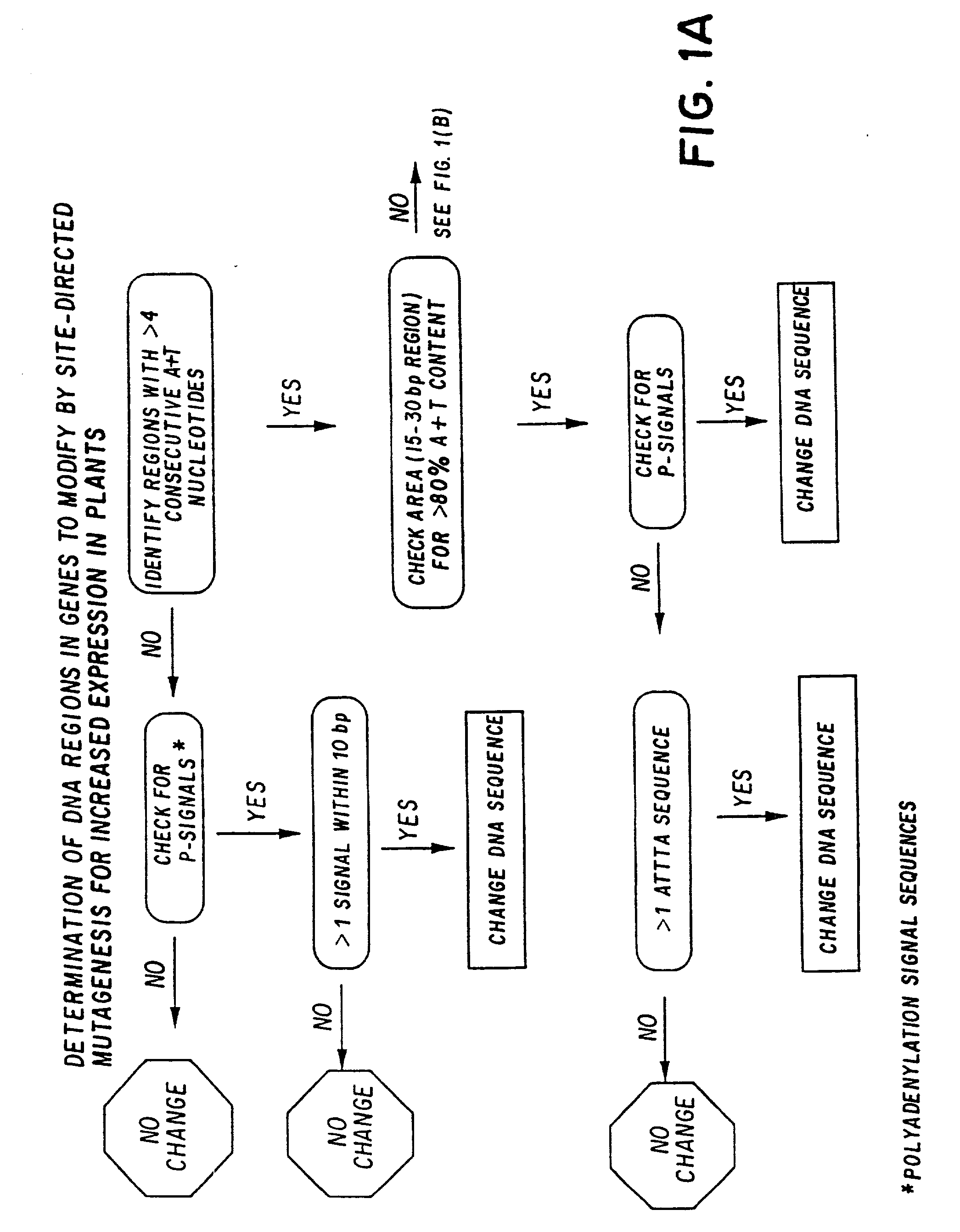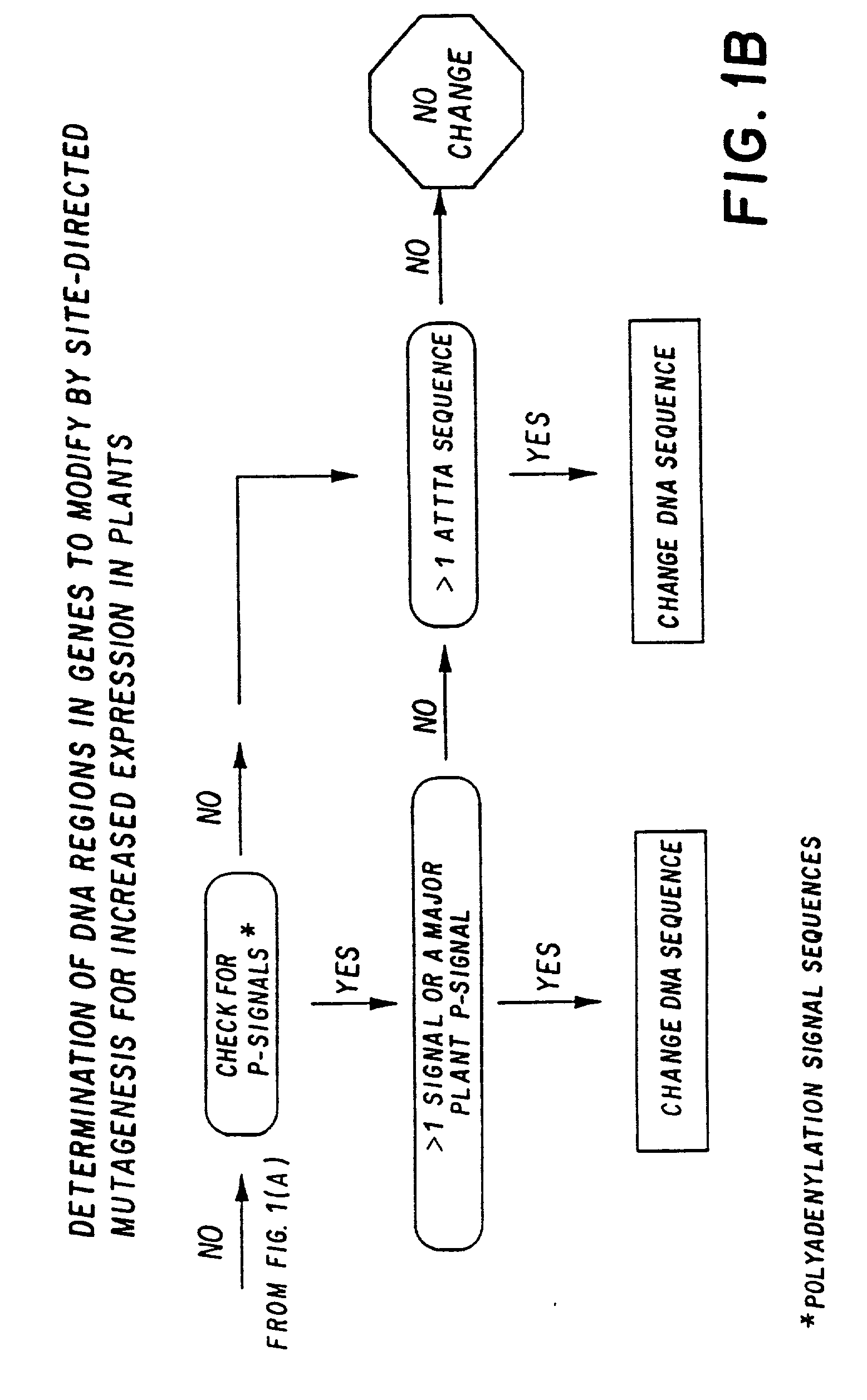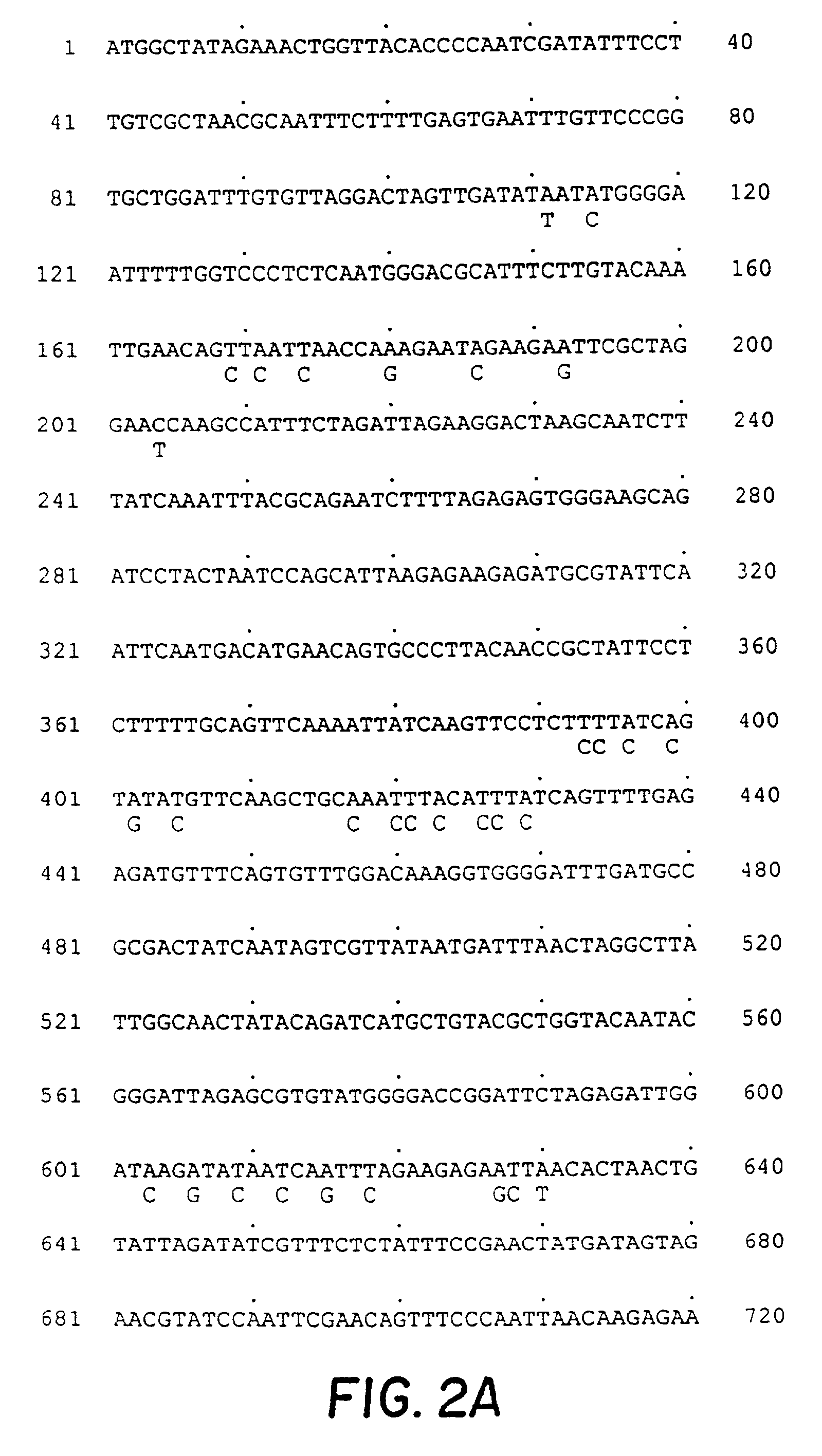Synthetic plant genes and method for preparation
a technology of plant genes and synthetic plants, applied in the field of synthetic plant genes, can solve the problems of difficult achievement, inability to yield insecticidal levels of expression in some plant species, and difficulty in achieving full-length lepidopteran specific b.t. genes (composed of dna from a b.t.k. isolate), so as to reduce the likelihood of hairpin structure formation
- Summary
- Abstract
- Description
- Claims
- Application Information
AI Technical Summary
Benefits of technology
Problems solved by technology
Method used
Image
Examples
example 2
Fully Synthetic B.t.k. HD-1 Gene
[0089] A synthetic B.t.k. HD-1 gene was designed using the preferred plant codons listed in Table V below.
[0090] Table V lists the codons and frequency of use in plant genes of dicotyledonous plants compared to the frequency of their use in the wild type B.t.k. HD-1 gene (amino acids 1-615) and the synthetic gene of this example. The total number of each amino acid in this segment of the gene is listed in the parenthesis under the amino acid designated.
6TABLE V Codon in Usage Synthetic B.t.k. HD-1 Gene Percent Usage in Amino Acid Codon Plants / Wt B.t.k. / Syn ARG CGA 7 11 2 (43) CGC 11 5 5 CGG 5 2 0 CGU 25 14 27 AGA 29 55 41 AGG 23 14 25 LEU CUA 8 16 4 (49) CUC 20 0 20 CUG 10 2 6 CUU 28 22 24 UUA 5 50 0 UUG 30 10 45 SER UCA 14 27 5 (64) UCC 26 9 28 UCG 3 8 0 UCU 21 19 31 AGC 21 6 32 AGU 15 31 5 THR ACA 21 31 14 (42) ACC 41 19 53 ACG 7 14 0 ACU 31 36 33 PRO CCA 45 35 53 (34) CCC 19 6 12 CCG 9 21 3 CCU 26 38 32 ALA GCA 23 38 26 (31) GCC 32 9 29 GCG 3 3 0 G...
example 3
Synthetic B.t.k. HD-73 Gene
[0092] The crystal protein toxin from B.t.k. HD-73 exhibits a higher unit activity against some important agricultural pests. The toxin protein of HD-1 and HD-73 exhibit substantial homology (.about.90%) in the N-terminal 450 amino acids, but differ substantially in the amino acid region 451-615. Fusion proteins comprising amino acids 1-450 of HD-1 and 451-615 of HD-73 exhibit the insecticidal properties of the wild-type HD-73. The strategy employed was to use the 5'-two thirds of the synthetic HD-1 gene (first 1350 bases, up to the SacI site) and to dramatically modify the final 590 bases (through amino acid 645) of the HD-73 in a manner consistent with the algorithm used to design the synthetic HD-1 gene. Table VI below lists the oligonucleotides used to modify the HD-73 gene in the order used in the gene from 5' to 3' end. Nine oligonucleotides were used in a 590 base pair region, each nucleotide ranging in size from 33 to 60 bases. The only regions lef...
example 4
Expression of Modified and Synthetic B.t.k. HD-1 and Synthetic HD-73
[0101] A number of plant transformation vectors for the expression of B.t.k. genes were constructed by incorporating the structural coding sequences of the previously described genes into plant transformation cassette vector pMON893. The respective intermediate transformation vector is inserted into a suitable disarmed Agrobacterium vector such as A. tumefaciens ACO, supra. Tissue explants are cocultured with the disarmed Agrobacterium vector and plants regenerated under selection for kanamycin resistance using known protocols: tobacco (Horsch et al., 1985); tomato (McCormick et al., 1986) and cotton (Trolinder et al., 1987).
[0102] a) Tobacco.
[0103] The level of B.t.k. HD-1 protein in transgenic tobacco plants containing pMON9921 (wild type truncated), pMON5370 (modified HD-1, Example 1, FIG. 2) and pMON5377 (synthetic HD-1, Example 2, FIG. 3) were analyzed by Western analysis. Leaf tissue was frozen in liquid nitro...
PUM
| Property | Measurement | Unit |
|---|---|---|
| Volume | aaaaa | aaaaa |
| Length | aaaaa | aaaaa |
Abstract
Description
Claims
Application Information
 Login to View More
Login to View More - R&D
- Intellectual Property
- Life Sciences
- Materials
- Tech Scout
- Unparalleled Data Quality
- Higher Quality Content
- 60% Fewer Hallucinations
Browse by: Latest US Patents, China's latest patents, Technical Efficacy Thesaurus, Application Domain, Technology Topic, Popular Technical Reports.
© 2025 PatSnap. All rights reserved.Legal|Privacy policy|Modern Slavery Act Transparency Statement|Sitemap|About US| Contact US: help@patsnap.com



